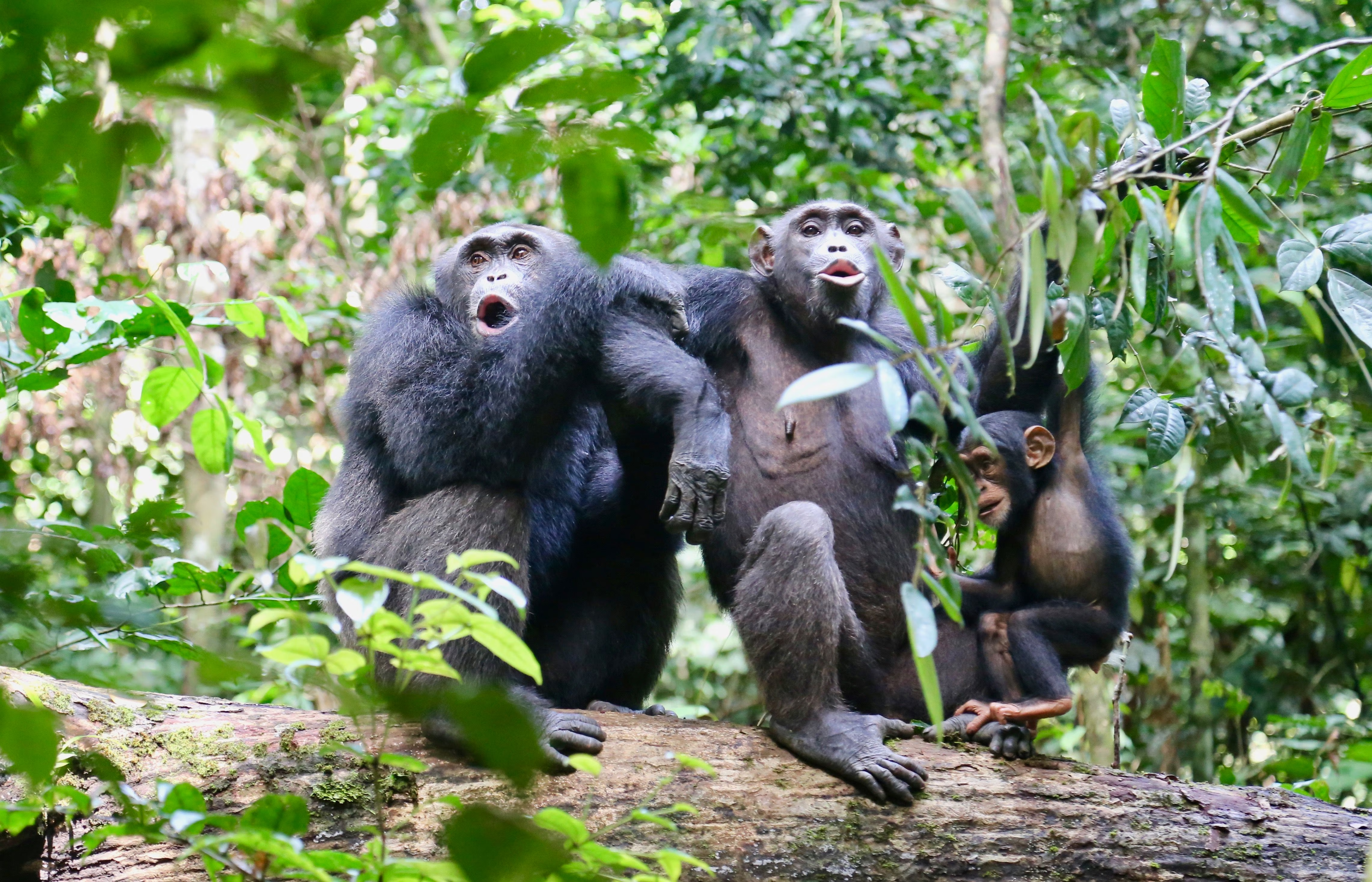Chimpanzees, our closest living relatives in the animal kingdom, are fascinating creatures that inhabit a variety of ecosystems across equatorial Africa. From lush rainforests to savannas and woodlands, chimpanzees have adapted to a diverse range of habitats, each with its unique challenges and opportunities for survival. In this exploration, we delve into the diverse ecosystems where chimpanzees roam, examining their behaviors, adaptations, and the conservation challenges they face.
- Rainforests:
Rainforests are among the most iconic habitats associated with chimpanzees. These dense, biodiverse forests provide ample food resources and shelter for chimpanzee communities. The lush canopies of trees offer protection from predators and the elements, while the forest floor teems with fruits, nuts, leaves, and insects—a smorgasbord of sustenance for these omnivorous primates.
In the rainforests of Central and West Africa, chimpanzees form complex social structures, living in communities led by alpha males and females. Their intricate social interactions involve grooming, communication through vocalizations and gestures, and hierarchical relationships that shape group dynamics.
- Savannahs:
Chimpanzees also inhabit savannah woodlands, characterized by vast grasslands interspersed with scattered trees and shrubs. In these open landscapes, chimpanzee groups navigate a different set of challenges compared to their forest-dwelling counterparts. While food may be more dispersed, allowing for wider ranging movements, the lack of dense vegetation exposes them to predators and environmental stressors.
Chimpanzees in savannah habitats exhibit behavioral adaptations to cope with the open terrain. They may engage in ground nesting at night, constructing simple sleeping platforms in trees, or utilizing caves and rocky outcrops for shelter. Their foraging strategies often involve traveling longer distances in search of food, including roots, seeds, and small mammals.
- Montane Forests:
In East Africa, chimpanzees are also found in montane forests, high-altitude habitats characterized by cooler temperatures and unique flora and fauna. These forests, situated in mountainous regions such as the Virunga Mountains and the Mahale Mountains, provide a haven for chimpanzee populations adapted to the challenges of living at altitude.
In montane forests, chimpanzees face limited food resources compared to lowland rainforests. They must rely on specialized foraging techniques to extract nutrients from bamboo shoots, lichens, and other mountain vegetation. The cooler climate also influences their behavior, with chimpanzees often exhibiting thicker fur coats and seeking warmth in the form of sunbathing or huddling together.
- Riparian Forests:
Riparian forests, situated along riverbanks and waterways, are another important chimpanzee habitat. These lush ecosystems provide a rich array of food resources, including aquatic plants, fruits, and insects. The presence of water not only sustains chimpanzees but also attracts other wildlife, creating a dynamic and diverse environment.
Chimpanzees in riparian forests demonstrate adaptations for exploiting aquatic resources, such as fishing for termites or using tools to extract edible plants from water bodies. The availability of water also serves as a natural barrier against predators, contributing to the safety and security of chimpanzee communities.
Conservation Challenges:
While chimpanzees have demonstrated remarkable resilience in adapting to various habitats, they face numerous conservation challenges that threaten their survival. Habitat loss and fragmentation due to deforestation, agricultural expansion, and human encroachment represent significant threats to chimpanzee populations across Africa.
Illegal poaching for the bushmeat trade, as well as the capture of infant chimpanzees for the pet trade, further exacerbate the decline of wild populations. Diseases transmitted from humans, such as respiratory infections and Ebola virus disease, also pose a serious risk to chimpanzee health and well-being.
Efforts to conserve chimpanzee habitats and protect these intelligent primates require collaborative action on local, national, and international levels. Conservation organizations work to establish protected areas, promote sustainable land management practices, and engage local communities in conservation initiatives. And funding through chimpanzee itineraries.
Education and awareness programs play a crucial role in fostering appreciation for chimpanzees and their habitats, encouraging sustainable behaviors, and empowering communities to become stewards of the environment.
In conclusion, the diverse ecosystems where chimpanzees roam offer a window into the complex interplay between wildlife, habitat, and human activities. From rainforests to savannahs, montane forests, and riparian habitats, chimpanzees have adapted to a wide range of environmental conditions, showcasing their resilience and adaptability as a species.
However, the future of chimpanzees hangs in the balance as they confront mounting threats from habitat loss, poaching, and disease. By fostering a deeper understanding of chimpanzee habitats and promoting conservation efforts, we can ensure that these remarkable primates continue to thrive in the wild for generations to come.

